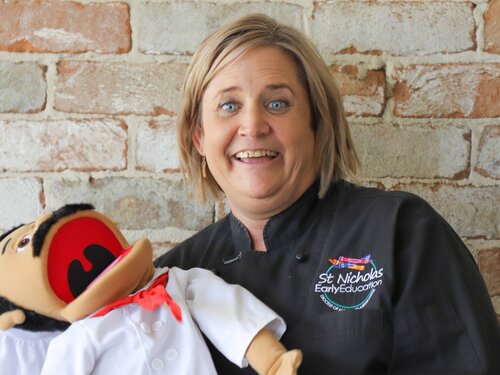Toddlers in FDC eat healthily and move more when educators have special coaching

Toddlers and preschoolers in family day care (FDC) ate healthier and were more physically active if the provider was coached in best practices and shown ways to meet those expectations, according to the findings of a new study from UConn and Brown University researchers.
The study, Healthy Start/Comienzos Sanos, looked at 400 children aged between two and five years of age in 120 FDC homes within a 60-mile radius of Providence, the capital city of the U.S. state of Rhode Island, to gauge over eight months whether certain interventions would influence the quality of foods being served and change the frequency of sedentary activities.
“There’s lots of data that shows the earlier children are exposed to healthy foods and the earlier they get accustomed to eating those foods, the more likely they are to carry those habits into later childhood and into adulthood,” explained lead researcher Professor Kim M. Gans.
“We looked at children in FDC homes because there is some national data that shows kids who are cared for in this setting may have a higher risk of obesity,” she added.
Professor Gans said that while most research focuses on centre-based care, there’s been little conducted on FDC homes, even though 26 per cent of U.S. children who are in care while their parents work, or 2 million, are enrolled in such programs.
At the start of the study, researchers surveyed the homes and did in-person interviews with caregivers, before a two-day observation during which they recorded what was going on in the home, including foods served, what actually was eaten, and the type and duration of physical activity.
Then, over eight months, caregivers received monthly feedback on areas that could benefit from improvement based on the 26 best practices outlined with the Nutrition and Physical Activity Self-Assessment for Child Care, known as NAP SACC.
With this, and from meetings with a peer coach, caregivers developed a goal for each month. They also received a monthly newsletter and video related to their goal and participated in support group meetings with others in the study.
Half the homes received interventions related to nutrition and physical activity, the other half had interventions that centered on reading readiness. Consequently, each home received either a box of toys to promote physical activity, such as hula hoops, soft balls, tunnels, and bean bags, or books and other materials related to reading readiness.
“We found that children in homes in the nutrition and physical activity group improved their diet quality more than the children in the homes that received the reading and literacy readiness intervention,” Professor Gans explained. “We also saw that those children reduced their sedentary time more than the children in the literacy group.”
Using a Healthy Eating Index score, researchers also found that the vegetable and added sugar scores changed for the better during the intervention period compared to the literacy group.
Children wore activity monitors throughout the study to capture how active the children were, with researchers finding that the more time children spent outside, the more active they were.
Details on whether the literacy group improved their reading readiness skills over the group that focused on nutrition and physical activity will be the subject of a future paper, the Professor added.
The FDC providers were extremely interested in getting an intervention because they wanted to learn more, she continued.
“We found that providers were very concerned about the health of the kids. They really feel like an extended family member, and they want more training to do a better job of providing healthy foods and activities for kids.”
During the observations, researchers noticed many homes didn’t offer self-serve water for the children or water breaks after outside activities. As a result, the researchers have launched Drink Well/Bebe Bien, a new study that will assess issues around water intake and access in FDC homes.
“There is data showing hydration is not adequate in kids, especially younger kids, and people tend to over serve milk and juice and they don’t think about water,” Professor Gans said. “It’s similar to food. If you get children used to drinking water, they’ll keep drinking water. But if they’re used to drinking only sweetened juice, milk, or sugar-sweetened soda, that’s what they’re going to want to drink going forward.”
Popular

Practice
Provider
Quality
Research
Workforce
New activity booklet supports everyday conversations to keep children safe
2025-07-10 09:00:16
by Fiona Alston

Quality
Practice
Provider
Research
Workforce
Honouring the quiet magic of early childhood
2025-07-11 09:15:00
by Fiona Alston

Quality
Practice
Provider
Workforce
Reclaiming Joy: Why connection, curiosity and care still matter in early childhood education
2025-07-09 10:00:07
by Fiona Alston












